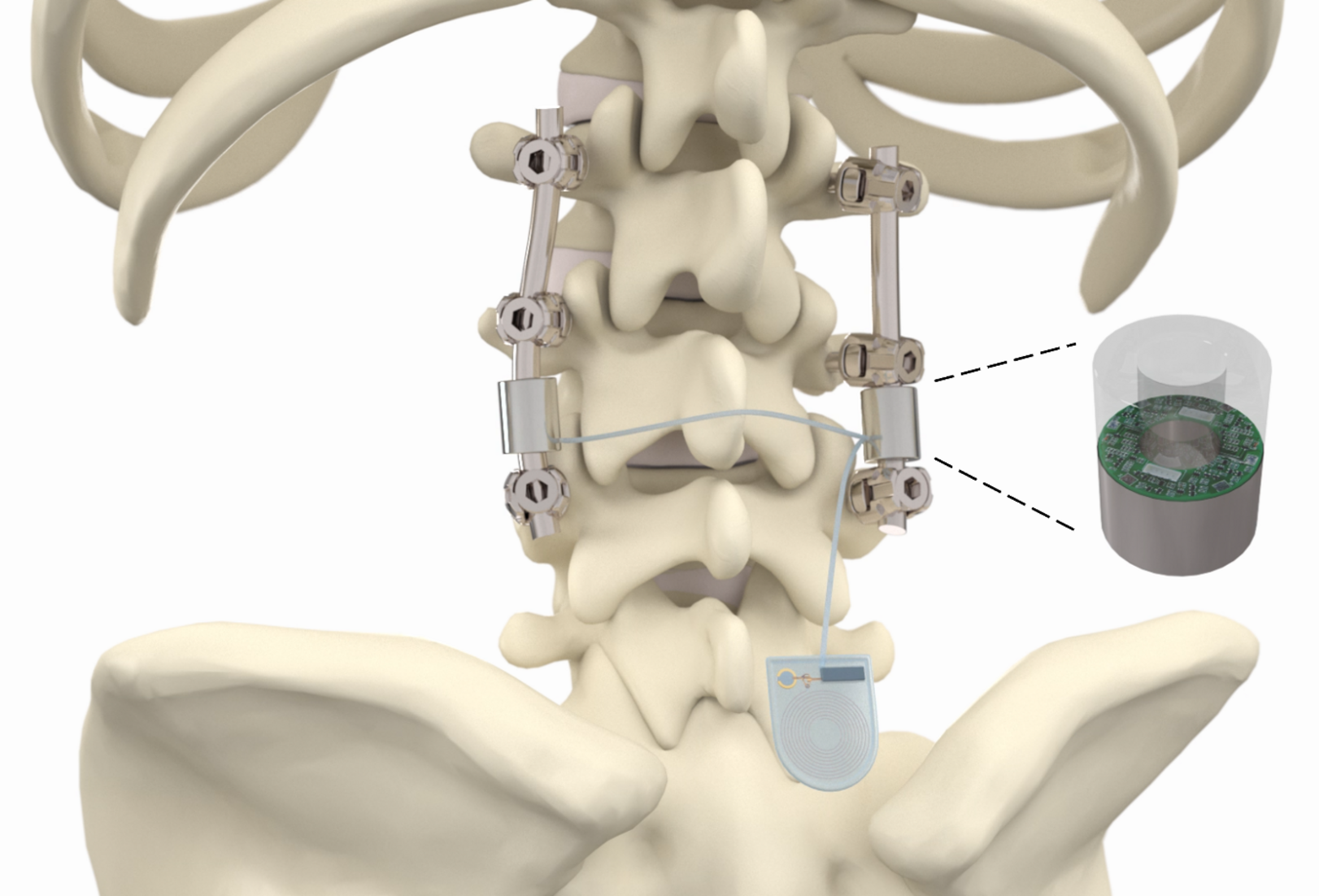Smart Spine Implant: Real-Time Recovery Monitoring Following Spinal Fusion
Spinal fusion surgery, while generally effective, is associated post-operative complications. Two major complications, screw loosening and pseudoarthrosis, often go undetected until patients experience persistent pain and require revision surgeries.
Current postoperative monitoring relies on intermittent imaging that provides only snapshots of implant health at scheduled follow-up visits, missing critical changes that occur between appointments. These infrequent assessments cannot capture the dynamic healing process or detect complications as they develop. Furthermore, current imaging technologies often fail to correctly identify complications. Meanwhile, rehabilitation protocols follow general guidelines rather than patient-specific progress, leading to either premature mobilization (risking complications) or delayed recovery (extending disability).
Our team is developing a proof of concept for a solution designed to address these limitations: a smart spine implant sensor that continuously monitors the recovery progression enabling early detection of complication onset and physical activity regulation dependent on fusion health.

Figure 1: The novel sensor system consists of force sensors attached to the fusion rods and a central unit for data processing and communication.
Real-Time Force Analysis
The sensor can be attached seamlessly to the fusion rods and continuously measures the forces transmitted through the implant construct. The force patterns serve as precise indicators of healing progress and complication development. Custom-designed integrated circuits achieve high power efficiency, enabling continuous operation for over six months without battery replacement.
Clinical Applications
The system is designed to provide improved clinical capabilities:
- Early complication detection: Identify problems weeks or months before they become symptomatic, allowing for conservative interventions rather than major revision surgeries.
- Personalized rehabilitation: Tailor activity levels and return-to-work schedules based on individual healing progress rather than generic protocols.
- Activity optimization: Monitor daily load patterns to prevent both harmful overloading and insufficient stimulation that impedes bone growth.
- Objective fusion assessment: Determine bone fusion status without radiation exposure or subjective interpretation of imaging studies.

